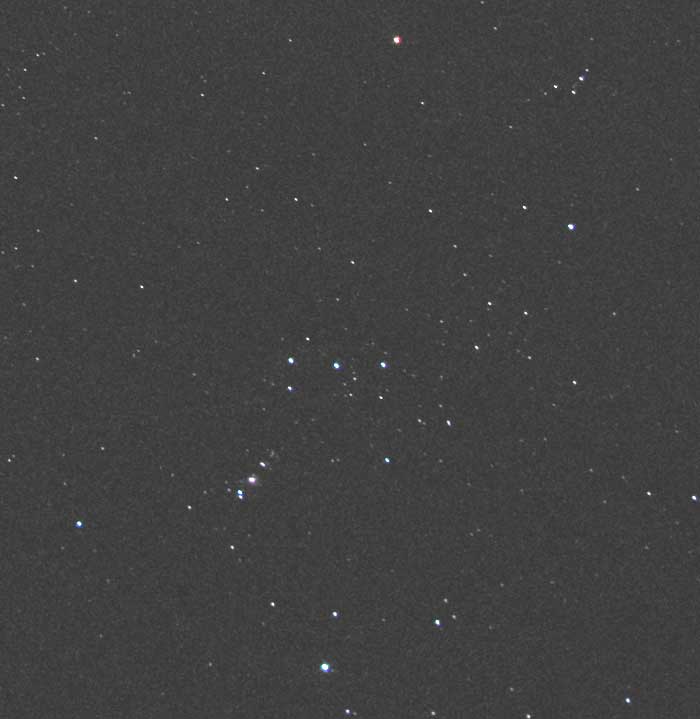Excerpts from Jim Conrad's
Naturalist Newsletter

from the March 17, 2013 Newsletter issued from the valley of the Dry Frio River in northern Uvalde County, southwestern Texas, on the southern border of the Edwards Plateau; elevation ~1750m (~5750 ft); N29.62°, W99.86°; USA
ORION
In the evening as soon as stars are shining brightly, if you step outside, you're away from light pollution and you're in the Northern Hemisphere you can't miss the constellation Orion. Along with the Big Dipper, or Ursa Major, Orion is one of the best known and easiest to identify of all constellations. It's worth taking a look at Orion nowadays because not only is it easy to see right in the center of the night sky a little after dusk, but also there are interesting things to know about. By placing my mid-range, off-the-Walmart-shelf camera on a tripod, using the lowest F-stop of 2.8, and keeping the shutter open for 15 seconds, this week I took the picture of Orion at the top of this page.
Orion is easy to recognize not only because of its large size and prominent position in the sky at this time of year but also because of the two sets of easy-to-see stars lined up three in a row. Orion is "The Hunter," so the three stars forming a horizontal line in the picture's center constitute Orion's belt, while the other three, smaller and closer-together below and to the left of the belt, represent the sword hanging from the belt.
The bright star at the picture's top, center -- that's the famous Betelgeuse -- represents one of Orion's shoulders, while the other bright star at 4 o'clock from Betelgeuse, known as Bellatrix, makes up the other shoulder. Orion's head is formed by the cluster of stars near the picture's top, right corner. Knowing where the head, shoulders, belt and sword are, you can figure out the two bright stars representing Orion's feet at the picture's bottom. Those stars are Saiph at the far left, and Rigel at bottom center.
Of the stars mentioned above, Rigel is famed as the sixth-brightest star in all the night sky. It's a "blue supergiant." Betelgeuse is a red supergiant.
In our picture you might notice that the middle star in Orion's dangling sword is fuzzy-looking. That's because it's not a star but rather the Orion Nebula, also known as M42, an enormous cloud of gas and dust, one of many in our Milky Way galaxy. It lies roughly 1,300 light-years from Earth. In this nebula it is thought that thousands of new stars are being born, formed of coalescing gas and dust.
There's plenty more to know about the stars, nebulae and deep-space objects occurring within the star field known as Orion. Wikipedia's Orion Page is at https://en.wikipedia.org/wiki/Orion_(constellation).
By the way, from the shoulder represented by Betelgeuse, at the picture's top, center, Orion raises a club-wielding arm above his head, presumably on account of Taurus the Bull, the constellation to Orion's right in the current night sky. The club is formed of weaker stars however, and our picture doesn't show them. Similarly, from the shoulder made by Bellatrix, Orion's arm extends westward bearing a curved shield, but these shield and arm stars also are too faint to feature in our picture. On a clear night, though, you can make out the club and shield, and the arms holding them.